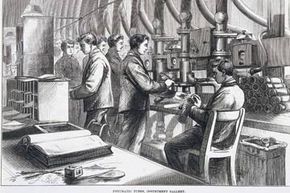For someone who was born after, say 1992, it's probably difficult to imagine, but there was a time when people didn't have e-mail, cell phones or digital books on Kindle. It gets weirder. Back in the day, the rapid transmission of written documents depended on something called a pneumatic tube.
Our ancestors' lack of instantaneous communication may make the world of a century or more ago sound hopelessly slow-moving. But it didn't seem that way to them. One reason was that they did have a means of transmitting written and printed information — and other objects as well — in what seemed like a flash. In a sense, it was their version of the Internet, but it wasn't electronic. Instead, they had something called pneumatic tube transport — a bunch of pipelines in which compressed air pressure is used to propel a canister through a pneumatic tube network to its intended destination [source: Library – UC Berkeley].
Advertisement
Starting in the mid-to-late 19th century, numerous major cities in the U.S. and other countries built massive underground networks of pneumatic tubes, and relied as heavily upon them as we do upon e-mail today. This pneumatic system worked so well, in fact, New York City's post office used one to move mail around the city until 1953, and Berlin had a similar system up and running until 1976 [source: Web Urbanist].
And while pneumatic tube transport has largely been supplanted by quicker and more convenient electronic methods of transmitting information, the technology still has valuable uses. In this article, we'll talk about how pneumatic tubes work, what they were once used for, and what they are used for today.
Advertisement


